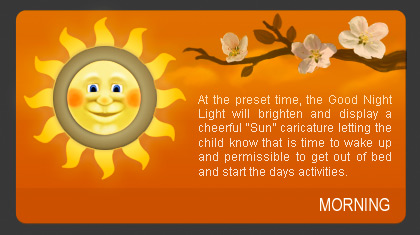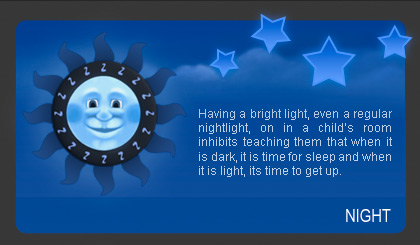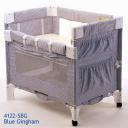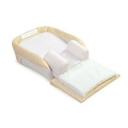When Your Child Wakes Up Too Early
 I am not a morning person. I love to sleep. The lack of sleep that comes with having children is probably my biggest personal challenge (and sacrifice)–well, that and staying calm when the children are not listening to directions–but that is a whole other topic. We prefer to have our kids go to bed on the earlier end (oldest and middle child with no nap=b/t 6:45 and 7, with nap= 8:30 or maybe 9, baby=b/t 6:30 and 7:00). We parental units like to enjoy some sit in front of the tv time to decompress quality time together. The unfortunate problem with this is that our kids tend to get up early and when they get up TOO early–it is often way before the chickens are stirring from their coops. Like before 6am. Anytime before 6:30 is too early in my book–7:00 is perfect.
I am not a morning person. I love to sleep. The lack of sleep that comes with having children is probably my biggest personal challenge (and sacrifice)–well, that and staying calm when the children are not listening to directions–but that is a whole other topic. We prefer to have our kids go to bed on the earlier end (oldest and middle child with no nap=b/t 6:45 and 7, with nap= 8:30 or maybe 9, baby=b/t 6:30 and 7:00). We parental units like to enjoy some sit in front of the tv time to decompress quality time together. The unfortunate problem with this is that our kids tend to get up early and when they get up TOO early–it is often way before the chickens are stirring from their coops. Like before 6am. Anytime before 6:30 is too early in my book–7:00 is perfect.
When we moved the oldest and middle child to the same room this summer we ran into some problems. They either accidently or purposely woke each other up. Middle child had a habit of pooping around 6 a.m. in his diaper. Rolling around in poo and smelling up the room probably woke up oldest child. Before we moved older child into middle child’s room, middle child would hang out in bed for a long time quietly talking or resting and would get up when he heard others up. Older child loves people so when he wakes up wants to be around ANYone and EVERYone. No leisure time in bed for him. You can see how this could be a problem with room sharing.
4 and 5 year olds don’t always understand that waking up their siblings can be a very selfish thing to do–not to mention it can really make mommy’s day miserable. Especially if she is dealing with 2 children who did not get the right number of hours of sleep. More whining and fighting anyone? We recently took out their lamp on their nightstand because one brother (I’m sure you can guess who) would decide to turn it on when he woke up–didn’t matter what time in the morning, and didn’t matter if other brother was sleeping. And trying to explain that other brother was whinier, grumpier and less pleasant to be around didn’t phase him. Grrrrrrr! And of course the lamp lighter brother had the biggest attitude about going back to bed. So what do you do when your kid gets up at the crack and refuses or “can’t” (aka WON’T) go back to bed for sleep or rest?
We have tried several things, some worked better than others:
1. A few years ago, we put a lamp on a timer so older child would know when it was okay to get up and out of bed. It seemed to work for a while but then he figured out how to mess with the timer and/or unplug it so we stopped being consistent with it.
2. We have finagled with bedtimes to see if that helps. We love the book, Healthy Sleep Habits, Happy Child, and have moved some bedtimes up earlier so they would sleep later. Counterintuitive I know, but it does work. Overtired children are more likely to wake up more often in the middle of the night and wake up early. Have you ever noticed that when you have a late night out your kids wake up at their same ol’ time or EARLIER? I am always hopeful they will sleep in–but I keep reminding myself that when they become teenagers and hibernate in their rooms sleeping through the mornings on the weekends I’ll get to really get to sleep in myself.
3. Patiently (keyword: patiently) leading them back to bed to rest until mommy or daddy come get them. It may only be enough time for some slight dozing or snuggling on the parental end but at least I am cozy in bed and not starting my day yet. I have had my fair share of mornings being grumpy, mad mommy insisting they go back to bed but that only makes it WORSE–they resist more and I get all riled up so I’m definitely NOT getting any more sleep. I’m too busy kicking myself for getting frustrated and trying to tell the adrenaline to shut off.
4. Teach them about time with a digital clock. This is obviously better for older kids but it has been working a little at our house. We had a special “training session” where I taught the kids how to get out of bed, open and shut their bedroom door quietly so they wouldn’t disturb the other person sleeping. We practiced getting out of bed and using “quiet feet” (we have wood floors on 3 of the 4 levels in our house so it often feels like we live inside a drum) several times. They had a lot of fun with it. I also have been going over with them almost daily that when the clock says “6:0_, 6:1_, 6:2_, 6:3_” then it is too early to get up and out of bed. They can lay in bed quietly (and we practiced several examples of what is NOT quiet) and then come out when the clock says “6:4_”. They can say it verbally back to me but when it comes down to practice they are still a little sketchy about it. Sometimes they forget to look at the clock, sometimes they read the numbers in the wrong direction–I mean they are 4 and 5 so of course it is going to take them a while to get it down. They have surprisingly had a lot of fun with all this training and are proud of themselves when they get it right. It still seems like they wake up at the same time more often than not. We have also been working on teaching about time with an analog clock just to help them with time in general.
5. I haven’t tried this one yet, but I just saw a little blurb in Parents Magazine about it and I am seriously considering ordering one. A Good Nite Lite was designed by a dad whose kid kept getting up at 5am. He designed the night light to glow like a sun when it is daytime and okay to get out of bed, and like a moon to show that it is still nighttime and to stay in bed. It costs $35 bucks which might be worth it for some extra sleep.


I realize that this post is geared for older kids in big beds, not babies. That is a different post that maybe I’ll write about another time. I have some experience in babies that get up too early too.
So, what do you do when your kids wake up too early? What has worked for you? What has been the biggest disaster?
Share the fun: Email + Del.icio.us + Digg + Technorati





